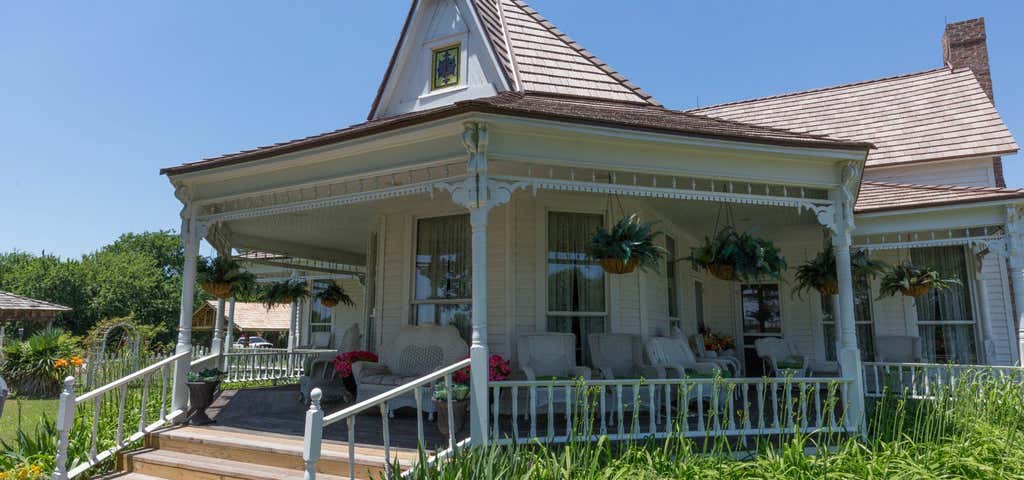Durant, Oklahoma, United States
Located within the Chickasaw Nation thirteen miles east of Madill or sixteen miles west of Durant on State Highway 199 PHONE NUMBERS Main Line: (580) 924-6502 Alt Line: (580) 371-9835
MAILING ADDRESS 3348 State Road 199 Durant, Oklahoma 74701
ADDITIONAL INFO Fort Washita was built in 1842 as the southwestern-most military post of the United States. The mission of Fort Washita was to maintain peace for the Chickasaw and Choctaw Nations within their new lands, pursuant to treaty obligations. There were many outside threats to the new home of the Chickasaw people, including attacks by Republic of Texas militia, interference by unscrupulous intruders, constant raids by Plains tribes, the presence of traders and trappers, and unsettled scores with some of the Plains tribes due to disputes concerning hunting grounds in the Homeland. Fort Washita operated as a United States military post until the start of the Civil War in 1861. It was then occupied by Confederate forces through 1865. The fort was almost entirely destroyed by the Confederates as they fled at the end of the Civil War.
After the war, the fort was granted to the Chickasaw Nation and later the Dawes Commission allotted the fort and surrounding land to the Charles and Abbie Davis Colbert family.
The Oklahoma Historical Society acquired Fort Washita in 1962 and restored it as a historic site and museum. In 2016, the Chickasaw Nation partnered with the Oklahoma Historical Society to assume responsibility and management of Fort Washita. The site is listed on the National Register of Historic Places and is designed as a National Historic Landmark.
Visitors to Fort Washita can tour restored structures, witness Civil War reenactments and take part in the yearly Fur Trade Era Rendezvous to experience what life was like before and during the Civil War. Other events throughout the year include storytelling, outdoor movies and special seasonal and holiday events that the whole family can enjoy.
Hours: Tuesday-Saturday, 9 a.m.-4:30 p.m., closed Sunday and Monday
6379 E Mansion Rd, Milburn, OK 73450 Phone: (580) 235-7343
Once considered a mansion on the frontier, it was home to Chickasaw Governor Douglas Henry Johnston and his family from 1898 to 1971.
The Chickasaw White House, located on the north edge of Emet, Oklahoma, was necessarily the scene of many important social and political events. Oklahoma Governor William E. "Alfalfa Bill" Murray was married there to Alice Hearell, a niece of Governor Johnston. Their son, Johnston Murray, was also born in the house, and was destined to become Oklahoma's 14th governor in 1951. Other marriages took place in the house, including that of Julia Chisholm, granddaughter of the famed Jesse Chisholm and adopted niece of Governor Johnston. Prominent politicians and members of the Dawes Commission also met at the house. The Governor scored several notable achievements on behalf of the Chickasaw Nation and its people, by appealing upon occasion directly to President Theodore Roosevelt, who was instrumental in keeping white adventurers off tribal rolls, in maintaining tribal control over Indian schools, and in saving tribal government by insisting Washington live up to its treaty obligations in regard to taxes.
Mrs. Johnston (Bettie) planted large cannas beds, jonquils, roses, day lilies, crepe myrtle trees and trumpet vines. Known for her medicinal skills, she found an abundance of herbs and plants on the property for use in home remedies and food preparations. Although she called the home "Breezy Meadow" the name never caught on and was discarded in favor of the "White House."
The astonishing 36-year tenure of Chickasaw Governor Douglas H. Johnston represents an important period in Chickasaw national life. Much of the history echoed within the rooms of the Chickasaw White House between 1898, when the house was built, and 1939, when the Governor died of heart failure in Oklahoma City. While of general public interest, the White House holds particular patrimonial significance for the Chickasaw People. The unique combination of tribal institutions and Southern social and political influences is a story within which all may find greater understanding of Indian Territory and the Chickasaw experience in the early 20th century.
Museum Hours:
Tuesday through Saturday, 9 a.m.-4 p.m. Closed for federal holidays
Tishomingo, Oklahoma, United States
Ole Red
214 W Main St, Tishomingo, OK
(580) 257-2217
Hours: Monday thru Sunday 11:00 AM to 8:00 PM




